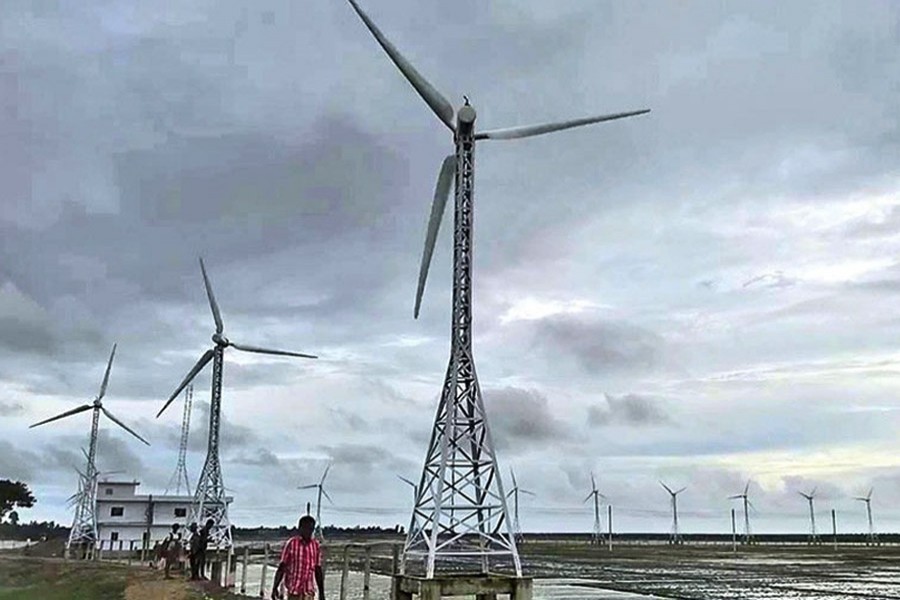The government has unveiled draft guidelines for installation of onshore wind power plants as part of its efforts to enhance clean energy generation in the country, officials said.
According to the guidelines, the project developers will first have to ensure the availability of required suitable sites with land use permission, check the availability of wind resources, technically and commercially feasible grid connectivity, transport logistics and environmental acceptability to setup wind power projects.
The Sustainable and Renewable Energy Development Authority (SREDA), which has published the guidelines recently, said it will collaboratively work with project developers to ensure that the project documents meet international banking requirements for standard project financing.
It said the project developers also have to ensure the availability of wind resources at the project sites based on various parameters measured for the purpose.
The quality of the data captured at a particular site for a quality assessment of the wind resource potential, project viability and sustainability of the project over its designed lifetime, also need to be ensured.
The draft guidelines said a noise study has to be carried out by the project developer and has to comply with the existing noise pollution (Control) rules of Bangladesh.
In Bangladesh, the acceptable sound limit in the silent zones is 50 decibels (dB) for daytime and 40 dB for night time while in residential areas, it is55 dB for daytime and 45 dB for night time.
In the mixed areas, the limit is 60 dB for daytime and 50 dB for night time while in commercial areas, it is70 dB for daytime and 60 dB for night time and in the industrial areas, it is 75 dB for daytime and 70 dB for night time.
The guidelines said wind is variable in nature and has low capacity utilisation factor (CUF) compared to conventional power thus energy storage systems will play a vital role in ensuring grid stability.
The SREDA suggested installing energy storage devices which will cover 5.0 per cent of plant capacity to ensure the grid safety.
SREDA chairman Mohammad Alauddin told the FE that wind power with 5.5 metres per second average velocity is suitable for setting up of a viable wind power project.
With new technologies in place, wind velocity of 3.0 metres per second is enough for rotation of wind turbines, he said.
Setting up of projects with such a low wind velocity may not be financially viable, he added.
According to a government's wind map, Kutubdia, Chakaria and Maheshkhali in Cox's Bazar district, Kalapara in Patuakhali district and Sonagazi in Feni district are suitable for setting up of wind projects in Bangladesh.
"The government wind map will give you an idea about wind speed. Before setting up of a project, you have to conduct a study to get real wind velocity," Mr Alauddin said.
Private-sector entrepreneurs are showing heightened interest to set up wind power projects, he said in reply to a query.
The Bangladesh Power Development Corporation (BPDB) in September last year floated a tender for setting up of two wind power projects having the capacity of 50 megawatts each -- one in Chandpur and another in Cox's Bazar.
In December, another wind power plant of 55 megawatt capacity got approval from the cabinet committee on government purchase. It will be set up at Mongla in Bagerhat district.
At present, only 2.9 megawatt of electricity is generated from three wind power projects of which only one has been connected to the grid line. Implementation of a 2.0 megawatt wind power plant in Sirajganj is underway while two other projects of 70 megawatts are under plan.
The government has set up a plant to generate 10 per cent of electricity from renewable energy by 2021.


